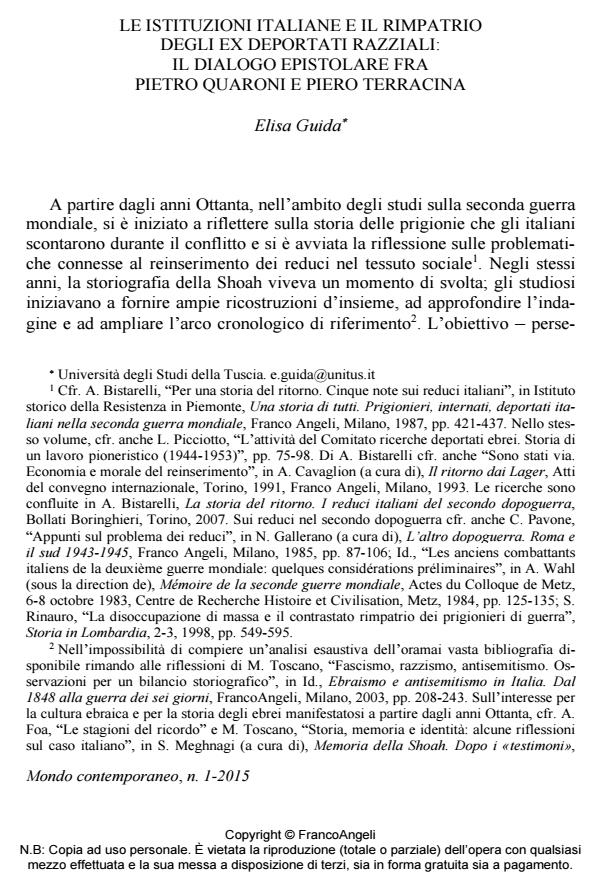The Italian Institutions and the Repatriation of Racial Ex-deportees: Epistolary Exchanges between Pietro Quaroni and Piero Terracina
Journal title MONDO CONTEMPORANEO
Author/s Elisa Guida
Publishing Year 2015 Issue 2015/1 Language Italian
Pages 27 P. 75-101 File size 167 KB
DOI 10.3280/MON2015-001002
DOI is like a bar code for intellectual property: to have more infomation
click here
Below, you can see the article first page
If you want to buy this article in PDF format, you can do it, following the instructions to buy download credits

FrancoAngeli is member of Publishers International Linking Association, Inc (PILA), a not-for-profit association which run the CrossRef service enabling links to and from online scholarly content.
In the institutional vacuum that characterised the management of the repatriations in Italy after World War II, almost no attention was paid to racial exdeportees. The only exceptions seem to be the work carried out by some diplomatic officials abroad: among them, the Italian Ambassador in Moscow Pietro Quaroni, who strove to ease and accelerate the repatriation of the racial ex-deportee Piero Terracina. The paper is based on the recovery of the correspondence between Quaroni and Terracina and on various interviews given to the author by the exdeportee. Through a comparison between the Quaroni-Terracina papers and the interviews, the article reconstructs the real dimension of the journey back home, with special attention to chronological and geographical references, as well as the relationship between the saved and the liberators. The essay, moreover, takes into consideration the symbolic dimension of the repatriation, which represented neither the end of the offence nor, even less, a prompt return to life and normality.
Keywords: Shoah, repatriation, diplomacy, identity reconstruction, absence, concentration camp system
Elisa Guida, Le istituzioni italiane e il rimpatrio degli ex deportati razziali: il dialogo epistolare fra pietro quaroni e piero terracina in "MONDO CONTEMPORANEO" 1/2015, pp 75-101, DOI: 10.3280/MON2015-001002